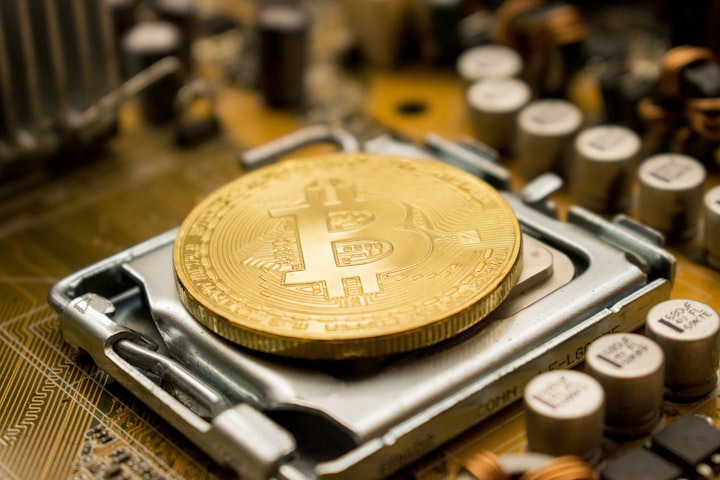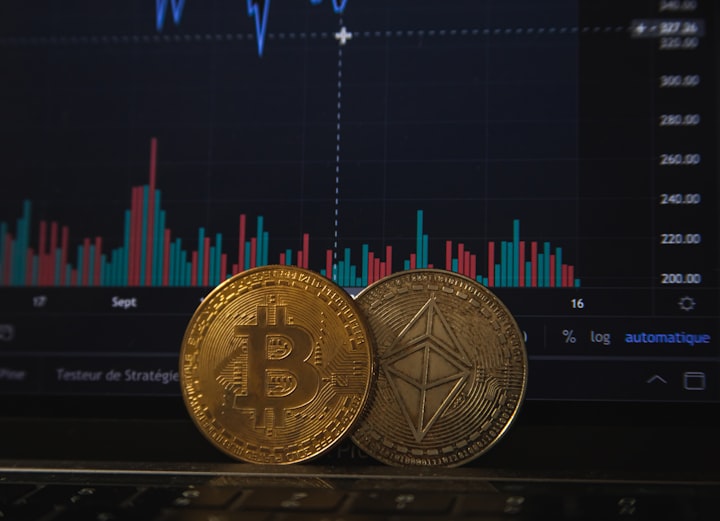What Is Bitcoin Mining?
Bitcoin mining is the process of verifying bitcoin transactions and entering them into the public Bitcoin register.

Bitcoin mining is the process of verifying bitcoin transactions and entering them in the public Bitcoin register. Simplilearna's video tutorial explains the process behind Bitcoin mining and the advantages of Bitcoin over traditional currencies. After discussing the basics of Bitcoin, we discuss how Bitcoin Mining works.
We will talk more about miners later, but the most important concept we need to understand is that there is no central entity that conducts bitcoin transactions. Instead, miners are network participants who have the hardware and computing power to validate transactions. Once a Bitcoin transaction has been verified by a Bitcoin user, it is verified by all members of the network.
Bitcoin mining is the process of adding transactions to the public register of Bitcoins of past transactions, the blockchain. The blockchain is called blockchain because it is a chain of blocks. Miners verify transactions by solving difficult mathematical puzzles called proof-of-work, and add them to the blockchain so that they can be validated and verified by other users.
The public register of Bitcoins of past transactions, the blockchain, serves to confirm transactions with the rest of the network as having taken place. Bitcoin nodes use the blockchain to distinguish legitimate bitcoin transactions from attempts to return coins that have already been issued.

Once a network of nodes validates a transaction and adds it to its copy of the Bitcoin blockchain, a broadcast is added to all other nodes. A Bitcoin transaction between Mr. X and Ms. Y is contained in the huge public register (blockchain) and is confirmed as a transaction in the existing block. Anyone can send many Bitcoins and remain anonymous. Once confirmed, a transaction cannot be reversed.
Successful miners who find new blocks are allowed to do so, and the rest of the network rewards them with Bitcoin transaction fees. After unlocking a new block and expanding the chain, the miners are rewarded with bitcoin. Half of the bitcoin supply will take about four years to dismantle, the rest about 120 years (an artificial process known as bitcoin halving), after which miners will be compensated with less BTC over time.
The Bitcoin protocol stipulates that the reward for adding blocks is halved every 210,000 blocks, every four years. The reward drops to zero when the limit of 21 million Bitcoins [g] is reached (approx. 2140) because rewards and transaction fees are logged. In other words, Nakamoto has established a monetary policy based from the outset on artificial scarcity of Bitcoins, so that the total number of Bitcoins will never exceed 21 million.
The overall goal is to keep the time needed to mine a Bitcoin at 10 minutes. Bitcoin was designed to adapt to the difficulty of mining a block every 14 days, so all blocks were mined in 2016. Prior to Bitcoin in 2009, the difficulty in mining Bitcoin was very high, owing to the resource-intensive and powerful hardware required for the currency.
The vast majority of Bitcoin's energy consumption occurs during the mining process. China has more bitcoin assets in China, which is heavily reliant on coal power. An incident at a coal mine in northern China caused a third of the Bitcoin network to go offline.

As the prices of Bitcoin and other cryptocurrencies soar, interest is growing in cryptomining, a way to accumulate cryptocurrencies without paying for them. Recently, we have seen a trend of bitcoin miners using obsolete fossil fuels. We have seen this trend in several areas, such as Montana, New York, and Kentucky, who thought it would be a great idea to lure miners and save their outdated coal fields.
Let's take a look at what makes a good cryptomining facility, what hardware it needs, and what to do if you want to get serious about mining. Essentially, you use a computer or computer to solve cryptographic equations to record data on a blockchain. A miner checks the hashes of unconfirmed blocks and receives a reward for each verified hash.
When a miner verifies bitcoin transactions worth 1MB (megabytes) known as a block, he is entitled to a reward, usually a lot of bitcoin or more than the bitcoin reward. The 1 MB limit was set by Satoshi Nakamoto and is controversial, as some miners believe the block size should be increased to accommodate more data, meaning that the Bitcoin network can process and verify transactions faster. Note that verifying transactions worth 1MB entitles a coin miner to earn Bitcoin, but not all verified transactions are paid out at once.
Bitcoin miners use special software to solve mathematical problems to spend a certain number of bitcoins in exchange for something. If you want to estimate how much bitcoin you can mine with your mining investment and hash rate, the Cryptocompare site offers a useful calculator. There will come a time when bitcoin mining will end in accordance with the Bitcoin protocol and the total number of bitcoins will be limited to 21 million.
This provides a smart way to spend Bitcoins and creates an incentive for more people to mine Bitcoins. Mining is an important and integral part of Bitcoin to ensure fairness and keep the Bitcoin network stable, secure and secure. Bitcoin mining is the process of creating new coins and involves the use of computers to solve complex mathematical algorithms and puzzles.
Cryptocurrencies are based on a decentralized network that needs to be dismantled. Bitcoin mining uses huge amounts of electricity and huge, powerful systems that miners use to mine blocks and verify transactions. The software that mines bitcoin takes an average of 10 minutes, and the network has to solve it to process the blocks.
The cryptocurrency industry has grown exponentially in recent years. Today, according to the census, Iceland's global share of bitcoin mining has fallen from about 2% to about 1%. I spoke to Alex Vries, founder of Digiconomist, who said Bitcoin mining involves millions of calculations to have the coins produced by a lottery.
Bitcoin mining nonces are 32 bits in size, which is smaller than a 256-bit hash. The 10 largest bitcoin mining pools by hash rate signal one block in the bitcoin network per taproot (soft fork activation). BTCTOP is the largest bitcoin mining pool with a hash rate that accounts for 41.4 percent of the total hash power of bitcoin networks.
About the Creator
Samyog kandel
I am a passionate writer, trying to inspire other through my story..





Comments
There are no comments for this story
Be the first to respond and start the conversation.